On the morning of June 30, provinces and cities across Vietnam simultaneously held the "Ceremony to announce the National Assembly’s Resolution on the merger of provinces and cities, along with the Central Party’s decisions on the establishment of provincial party committees and local leadership personnel."
Starting at 8:00 AM, ceremonies nationwide were held to announce central and local resolutions and decisions on the merger of provincial and communal-level administrative units, the formation of party organizations, the appointment of party committees, People's Councils, People's Committees, and the Fatherland Front at all levels including provincial, municipal, district, and special administrative zones.
This is a historic and politically significant event for Vietnam. It marks a reconfiguration of the nation not just for administrative simplicity but for robust and sustainable development.
General Secretary To Lam attended the ceremony in Ho Chi Minh City, President Luong Cuong in Hanoi, Prime Minister Pham Minh Chinh in Hai Phong, National Assembly Chairman Tran Thanh Man in Can Tho, and Permanent Secretariat member Tran Cam Tu in Da Nang.
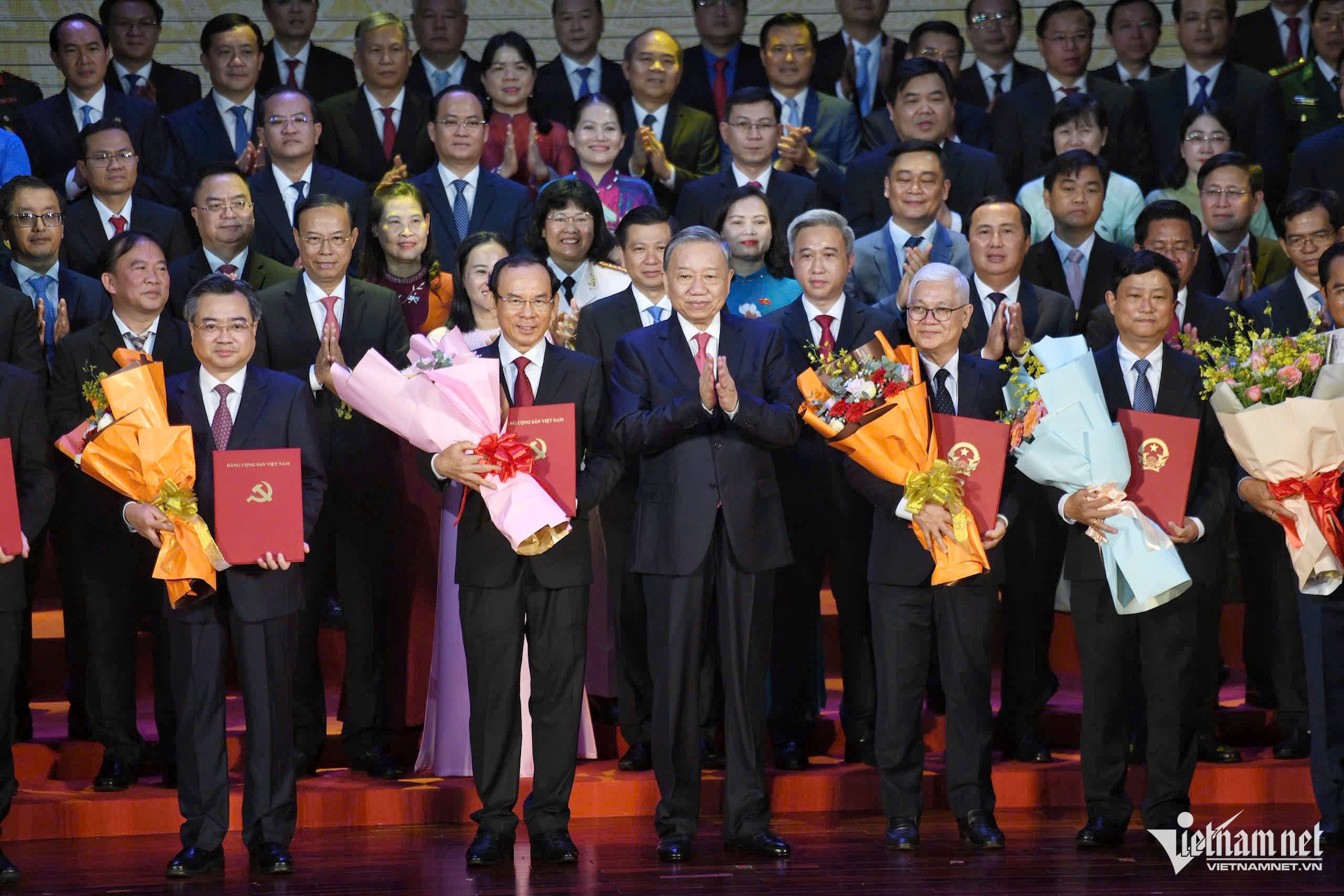
Other high-ranking Party and State leaders also attended announcement ceremonies in various localities.
Speaking to the people of Ho Chi Minh City, General Secretary To Lam emphasized that the merger of three localities is not merely an administrative combination but a convergence of intellect and shared aspirations to form a mega-urban area - a regional and global center for finance, manufacturing, logistics, and innovation.
This new development space is founded on long-term vision, aiming for synchronized, sustainable, and scientific growth. It reflects strategic thinking and governance reform to serve the people better, more closely, and more effectively. It is a pioneering, groundbreaking step in restructuring urban governance, enabling rapid, robust, and efficient development in the nation's most urbanized region.
The model will enhance autonomy and flexibility in administration, while establishing a clear institutional framework for satellite cities, industrial zones, and logistics-service-port clusters to fully unleash their potential. Most importantly, a government that truly serves the people will move from being a slogan to tangible, real-world action reaching every citizen and business.
On behalf of the Party and State leadership, General Secretary To Lam earnestly called on all cadres, Party members, public officials, civil servants, workers, armed forces, business communities, and citizens of Ho Chi Minh City to unite, act decisively, creatively, and with discipline to elevate the newly merged city to new heights.
He affirmed that this is both a challenge and a historic opportunity. The success of the new city will not come from resolutions alone, but from public consensus, determined leadership, and dedicated execution.
He expressed his hope that city leaders would remain resilient, value collective wisdom, stay close to the people, and act for the people - putting the nation’s and people’s interests first. He urged them to inspire a spirit of progress, transforming every street, neighborhood, community, factory, field, river, and coastline into symbols of prosperity and integration. Ho Chi Minh City, with its achievements 50 years after liberation, is not only a beacon of Vietnam but a future rendezvous for Asia and the world. Together, we must act to earn the trust and hope of the Party, State, and people.
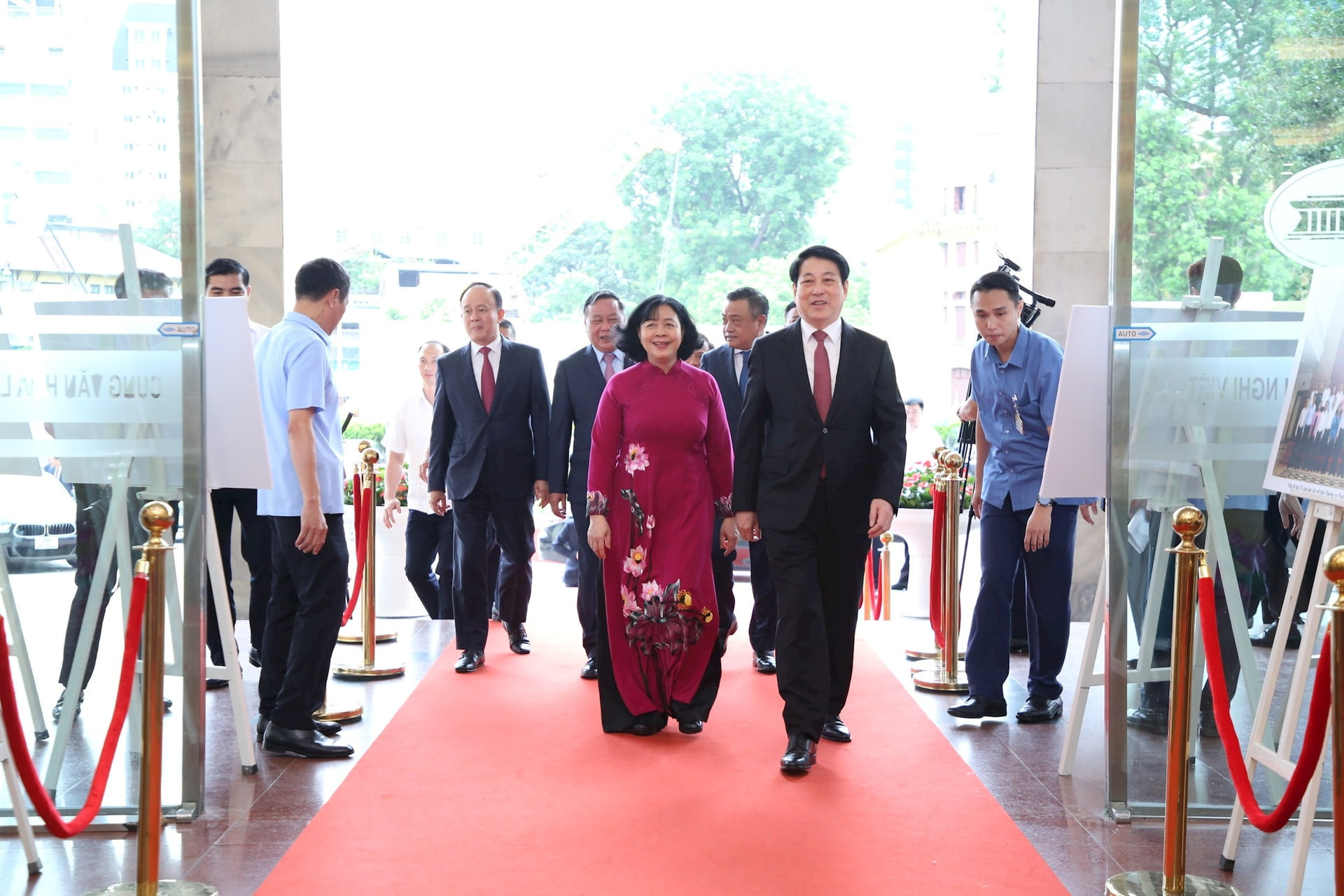
At the Hanoi ceremony, President Luong Cuong stated that following the Politburo’s conclusions, 34 provinces and cities across the nation simultaneously held ceremonies to announce resolutions and decisions regarding administrative mergers, formation of party organizations, and the appointment of local authorities. This marks a significant milestone for the entire country and for Hanoi as local governments transition from a three-tier system, operational for 80 years, to a two-tier model starting July 1, 2025.
The President affirmed that this is a major, strategically important policy by the Party and State, demonstrating strong political resolve to build a streamlined, efficient, and effective administration that better serves the people. The reform goes beyond adjusting administrative boundaries - it is a transformative move in terms of politics, organization, and sustainable national development.
Particularly for the thousand-year-old capital of Hanoi - a political, cultural, educational, scientific, and international integration hub - the administrative merger is of immense importance. It addresses urban, cultural, and historical development needs; enhances administrative reform and resource management; and boosts Hanoi’s leadership role in the Capital Region, Northern Key Economic Region, and nationwide.
President Cuong commended the Hanoi Party Committee for its responsible, creative approach to restructuring, including eliminating district-level units and reducing commune-level units from 526 to 126. Importantly, the reform has received strong support from the public and Party members, showcasing a shift in governance thinking and opening new space for Hanoi’s growth.
To meet the goal of a lean but powerful administrative system, the President urged the Hanoi Party Committee to lead local authorities, especially those in the 126 new communes and wards, in ensuring smooth, efficient, and synchronized operations from day one. He stressed avoiding delays or disruptions, particularly in essential services and interactions with citizens and businesses.
He called on officials to uphold high responsibility, innovation, and public service ethics. He advocated for a shift from administrative mindset to service-oriented governance that earns public trust and support.
Based on the Party and State’s recent policies and legal frameworks for the two-tier model, President Cuong asked Hanoi authorities to thoroughly implement these directives, including Politburo Directive No. 45 on Party congresses, and the resolutions guiding Hanoi’s development until 2030 and vision to 2045, along with the 2024 Capital Law.
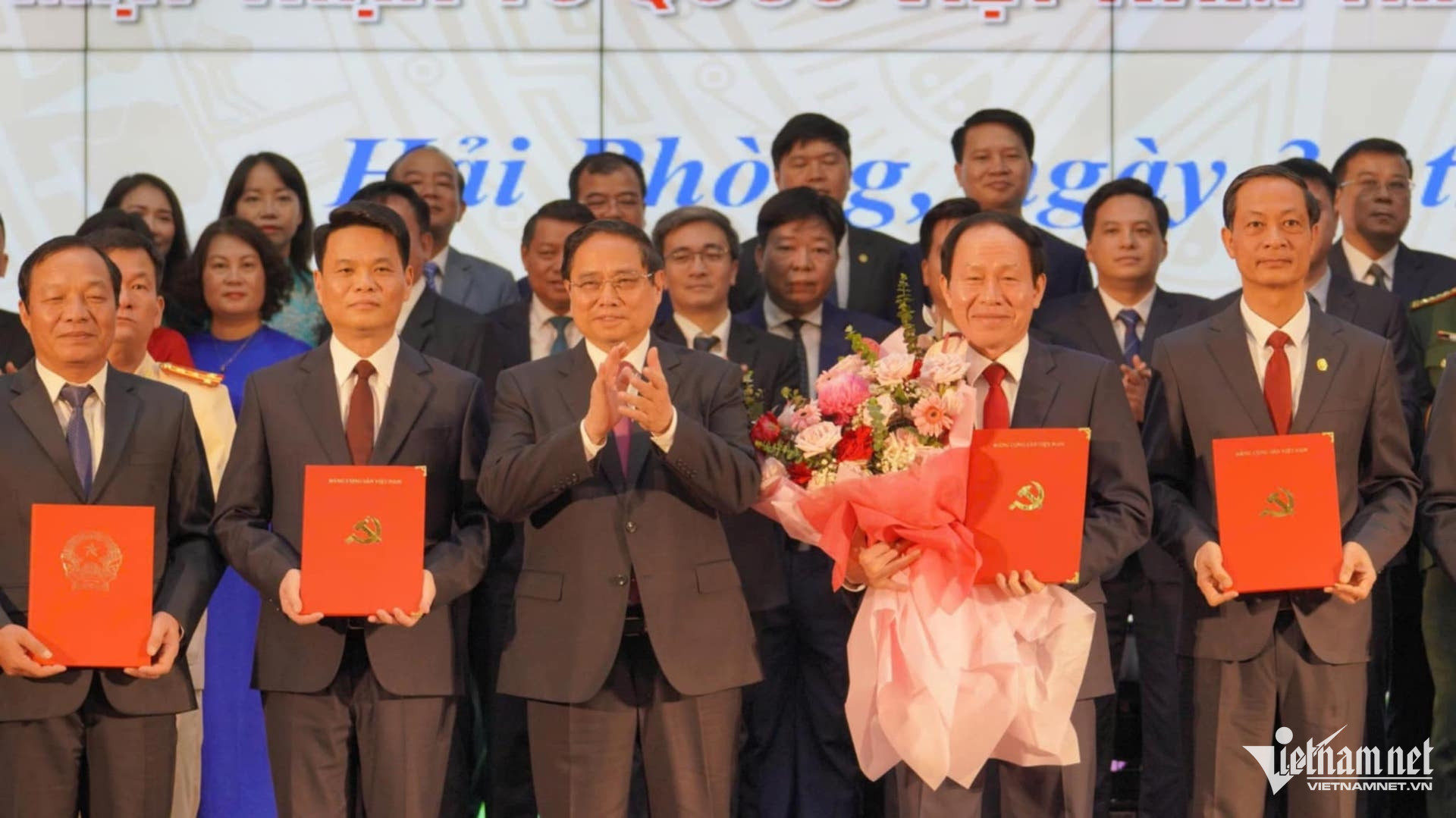
In Hai Phong, Prime Minister Pham Minh Chinh declared the new two-tier administrative system a historic milestone and a celebration of national unity and progress.
He emphasized that the merger of Hai Duong province and Hai Phong city is a strategic, historic decision that ushers in a new era of development for both the locality and the Red River Delta, contributing to national prosperity.
This reform, directed by General Secretary To Lam, aims to streamline government structure, enhance public service delivery, reduce staffing, and improve administrative quality in line with global trends and integration demands. It optimizes land, population, and development space, unlocking the combined strengths of Hai Phong and Hai Duong.
The Prime Minister noted Hai Phong’s proud history of resistance, industrial progress, and economic leadership, while praising Hai Duong’s cultural heritage and growing industrial and agricultural strength.
The new administrative entity, named Hai Phong City, reflects visionary leadership and creates a powerful new growth pole with modern, smart urban functions in industry, logistics, ports, commerce, education, and technology.
He lauded both localities for their proactive, disciplined, and professional approach to merging party and government structures and preparing leadership appointments.
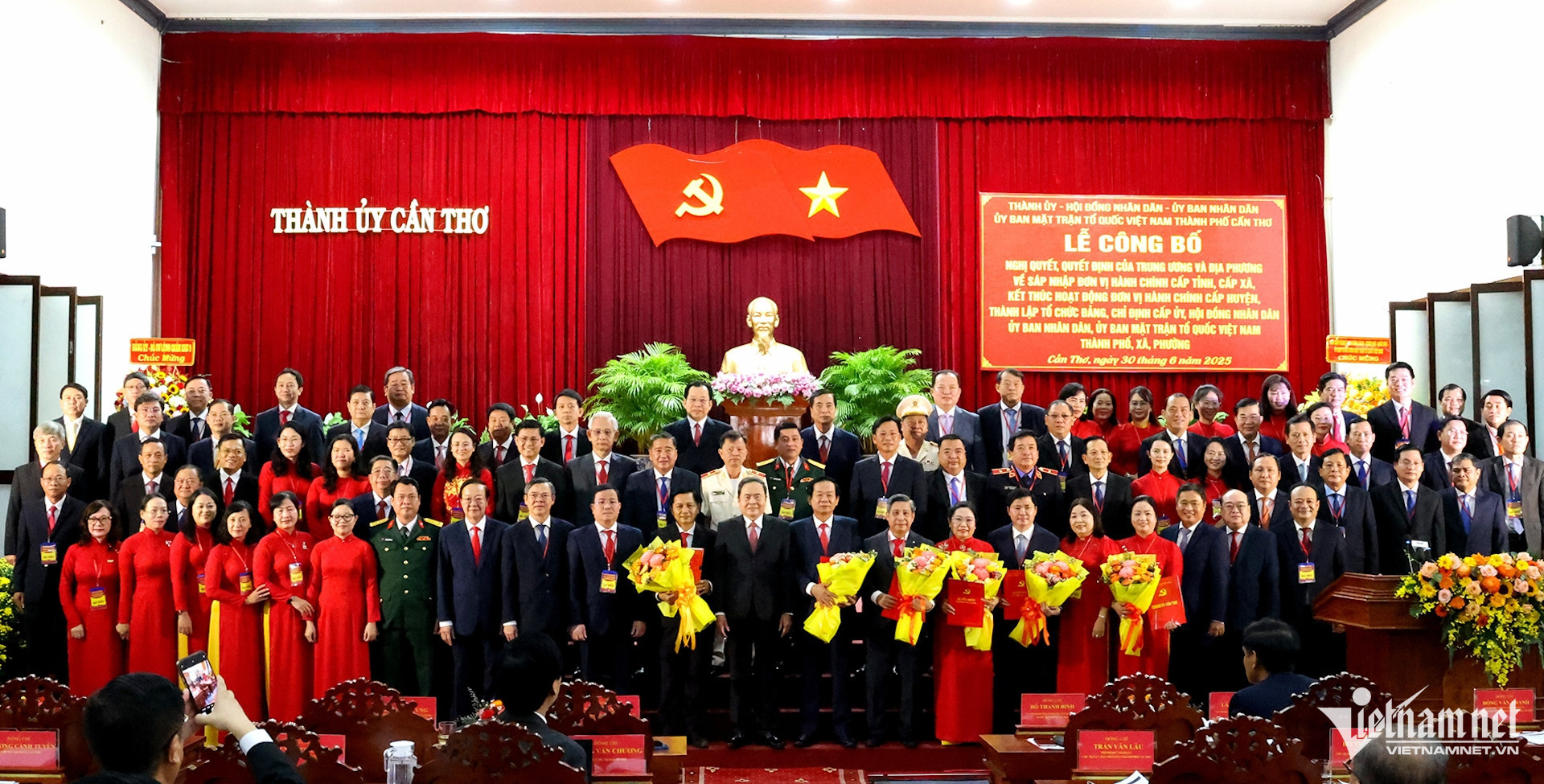
In Can Tho, National Assembly Chairman Tran Thanh Man emphasized the consistent, nationwide implementation of this major policy. From July 1, 2025, local governments across Vietnam will operate under the new two-tier model, reducing bureaucracy, enhancing agility, and empowering regional development.
He acknowledged the difficulty of merging administrative units due to cultural, social, and logistical differences. Nevertheless, he praised the leadership of Can Tho, Hau Giang, and Soc Trang for their coordinated, scientific, and effective implementation, gaining high public consensus.
He expressed deep gratitude for the dedication of local officials and citizens, noting the historical connection between the three provinces under the former Hau Giang province. The reunification under the name Can Tho City honors this heritage and facilitates economic, cultural, and defense collaboration in the Mekong Delta.
This lays the groundwork for Can Tho to realize the goals set by Politburo Resolution 59 and National Assembly Resolution 45/2022 on special development mechanisms for the city.
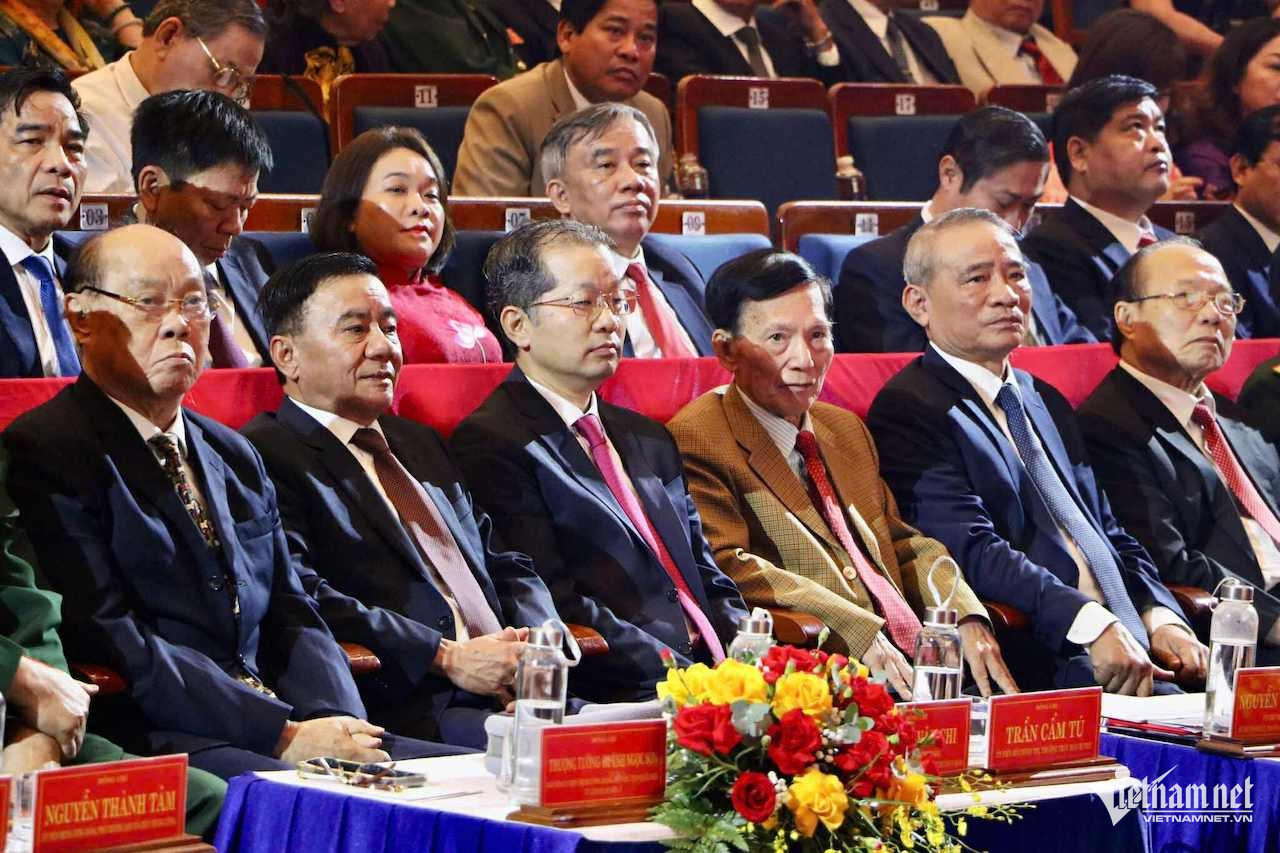
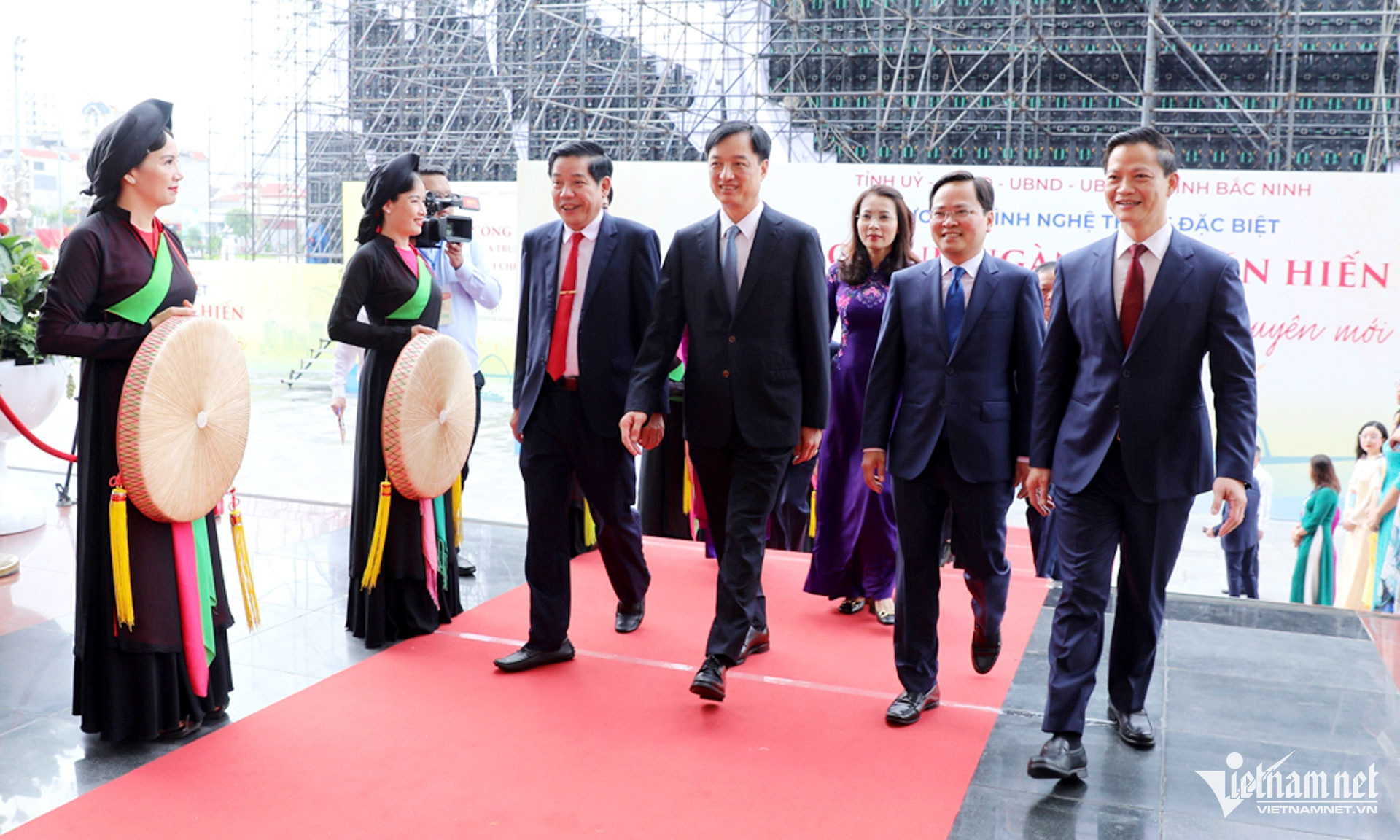
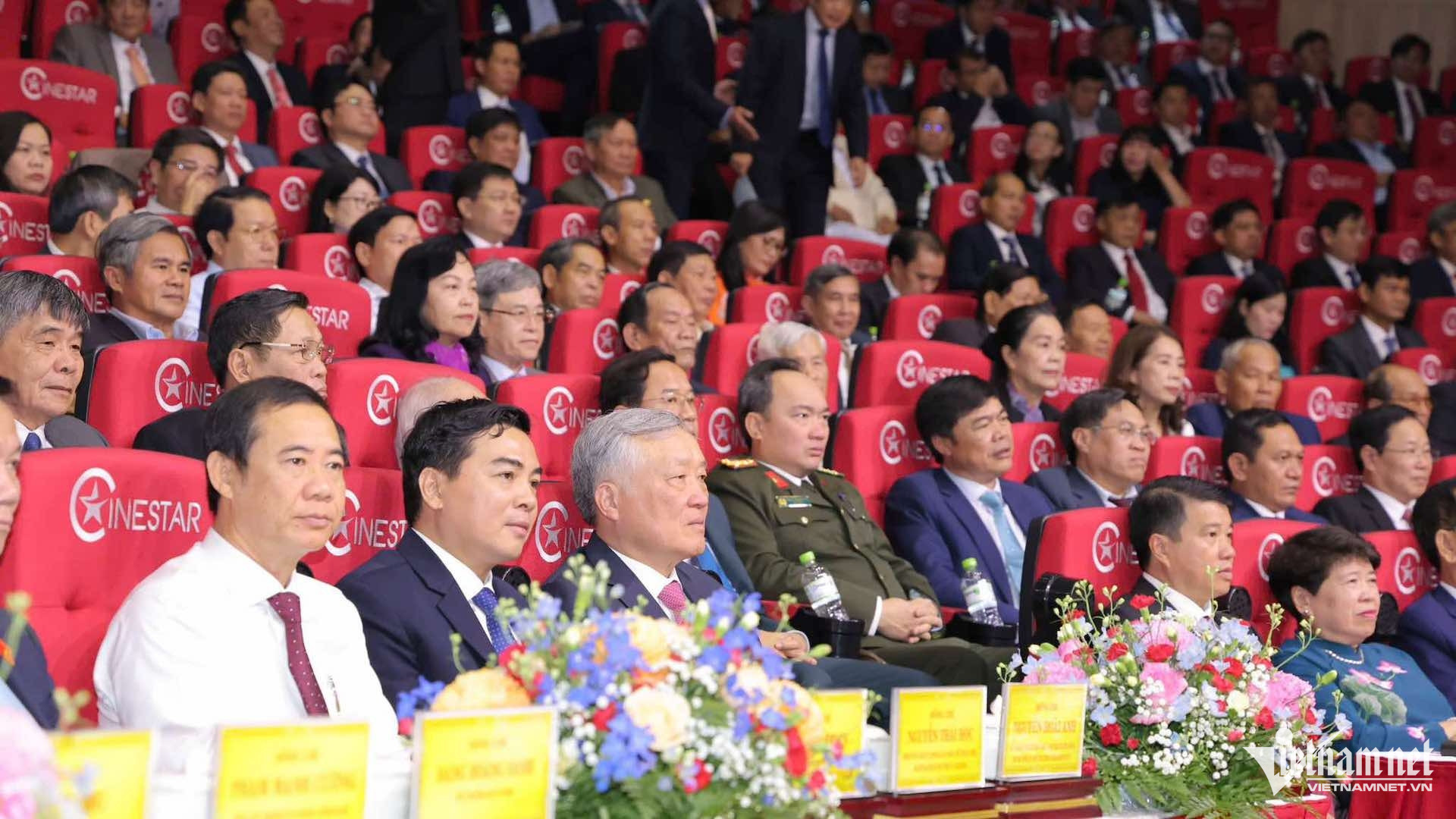
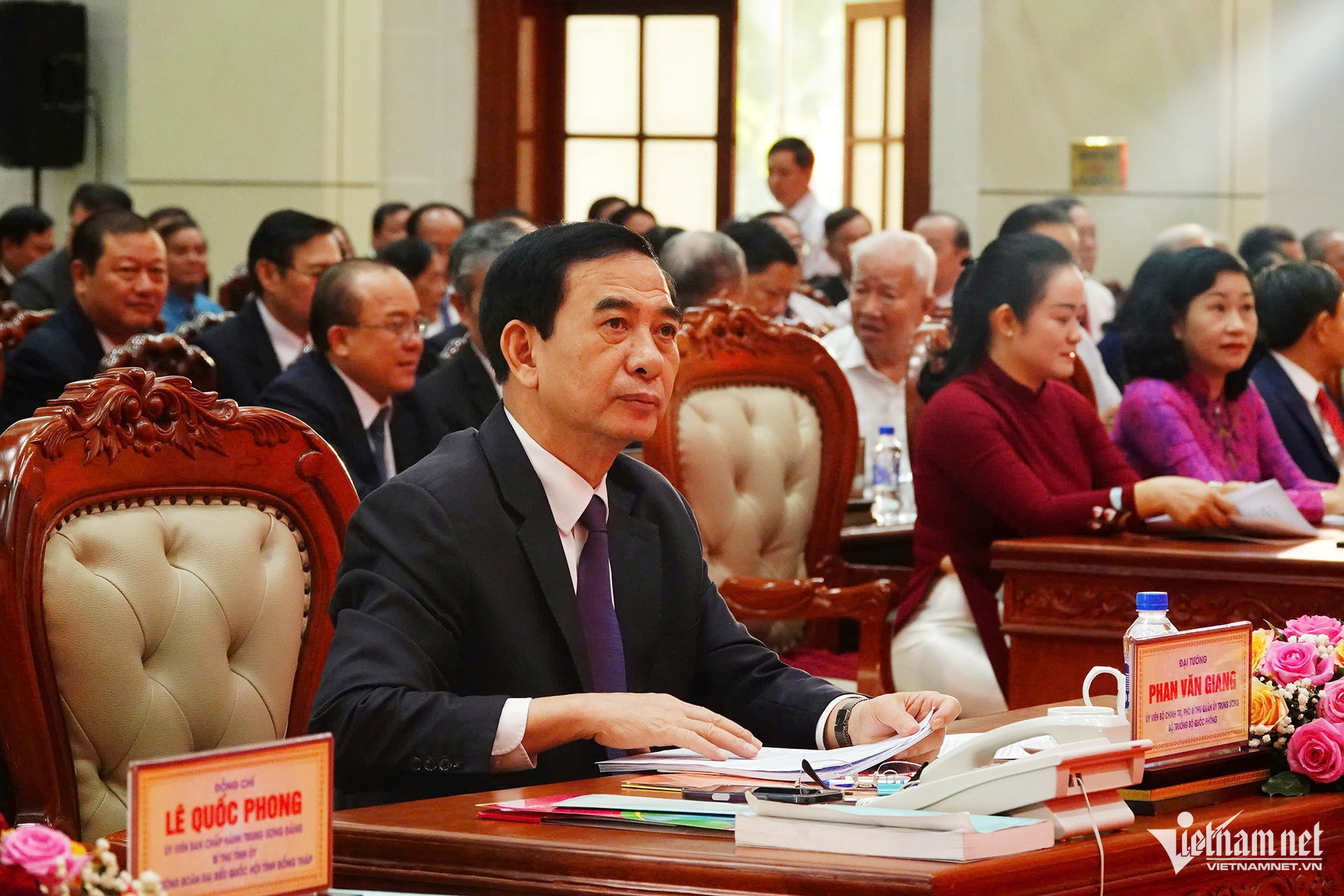
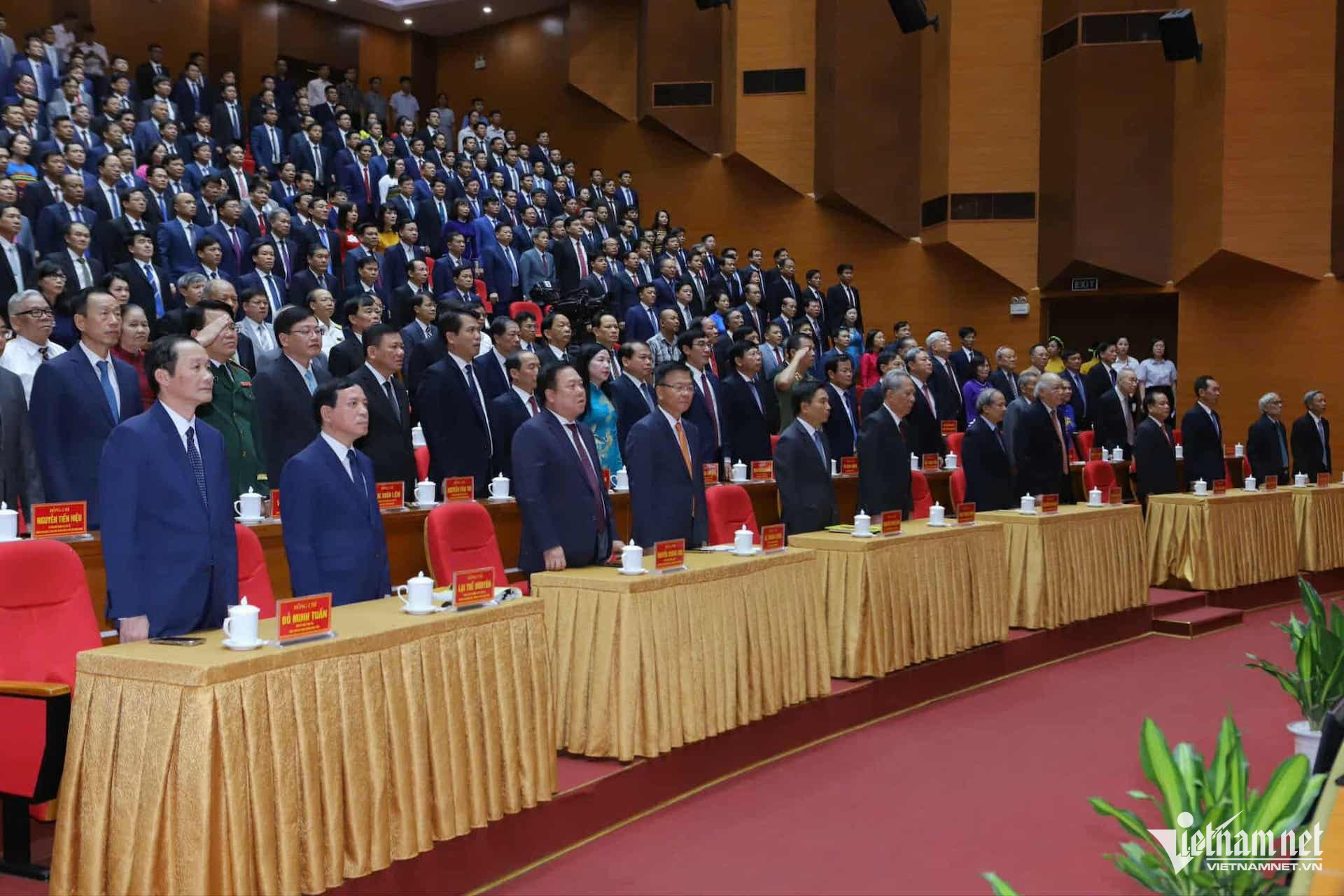
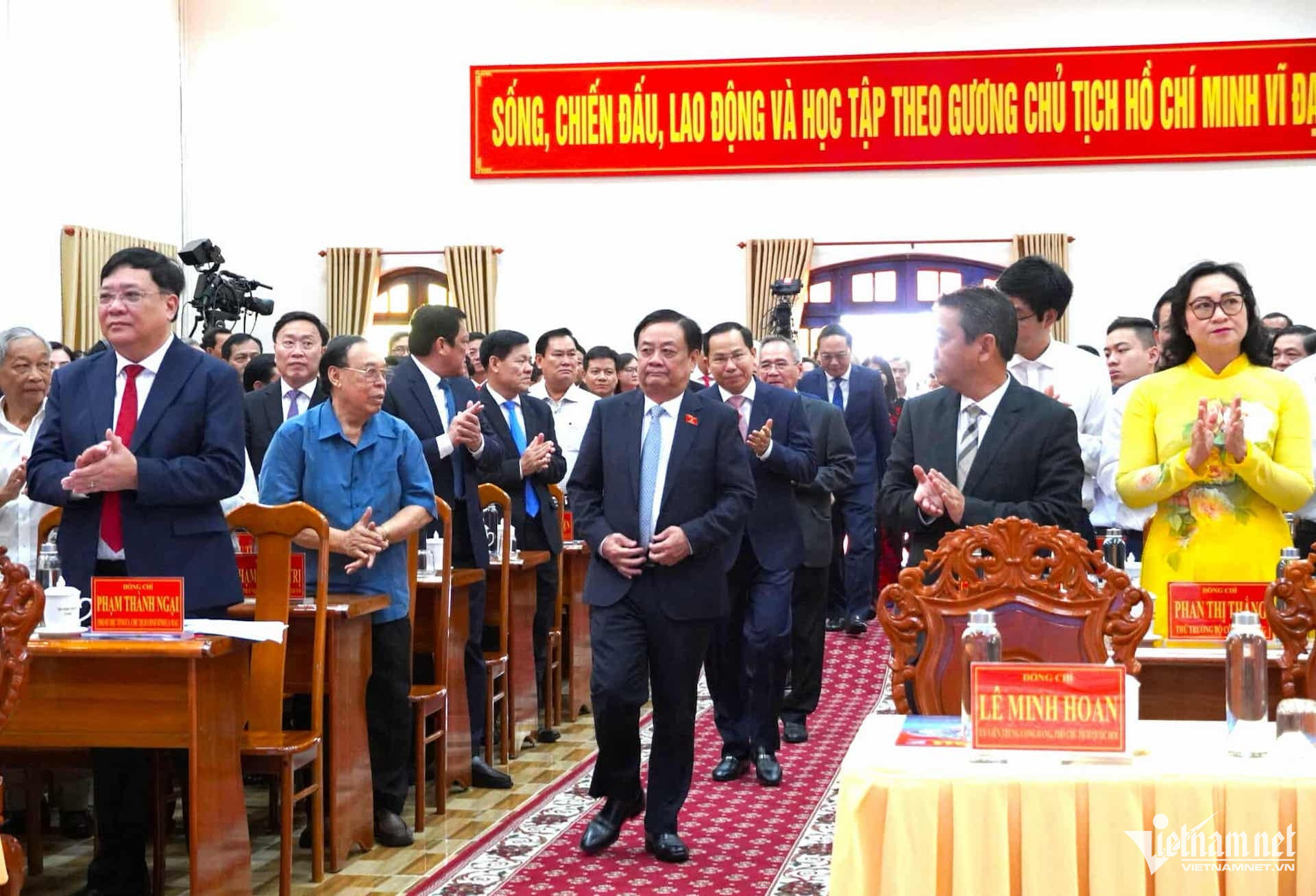
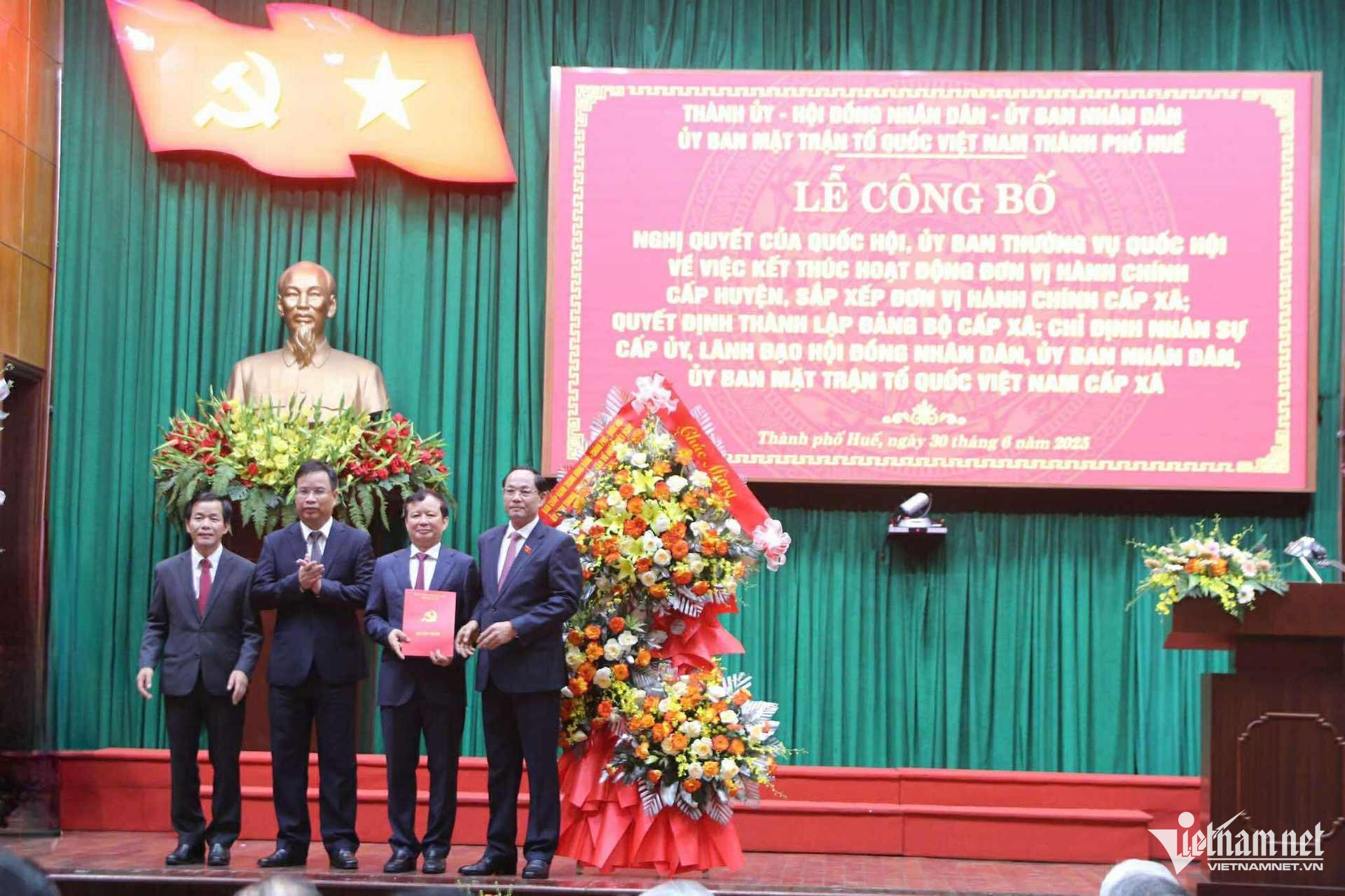
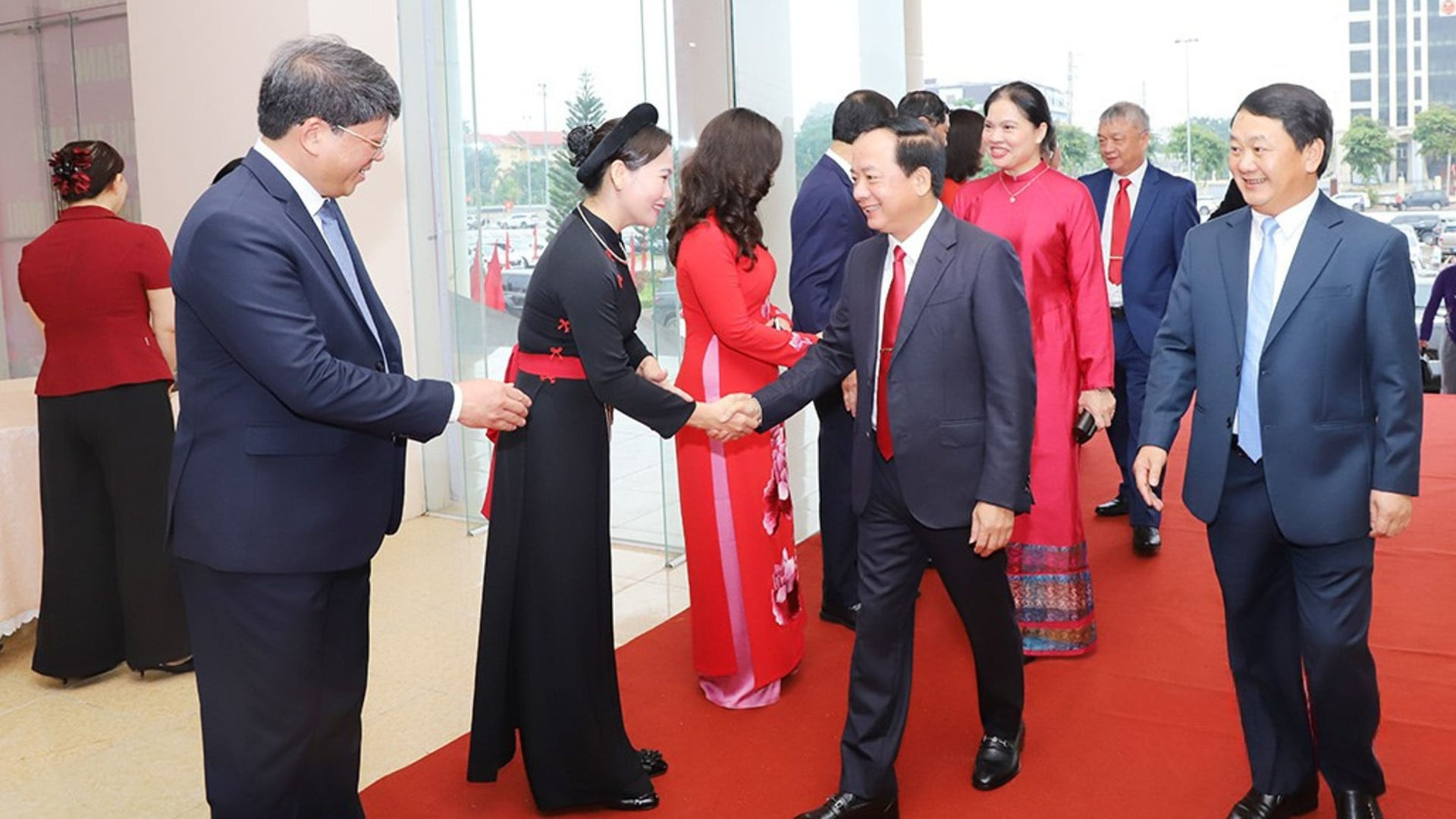
At the ceremony, provinces and cities announced seven key resolutions and decisions issued by the central government:
(1) The National Assembly’s Resolution on the establishment of new provinces and centrally governed cities.
(2) The Politburo’s Decision on the formation of the provincial and municipal Party Committees.
(3) The Politburo’s Decision on appointing the Executive Committees, Standing Committees, Party Secretaries, and Deputy Secretaries for the 2020-2025 term.
(4) The Secretariat’s Decision on appointing the Inspection Committees, Chairs, and Deputy Chairs of provincial-level Inspection Committees.
(5) The National Assembly Standing Committee’s Resolution on appointing Chairpersons and Vice Chairpersons of the People's Councils; Heads of the People's Council Committees; and Heads and Deputy Heads of the National Assembly delegations of provinces and cities.
(6) The Prime Minister’s Decision on appointing Chairpersons and Vice Chairpersons of the People's Committees of provinces and cities.
(7) The Central Committee of the Vietnam Fatherland Front’s Decision on establishing provincial and municipal Fatherland Front Committees.
This event carries historical significance and reflects strong political resolve to build a streamlined administrative apparatus that is efficient, effective, and truly serves the people.
According to the National Assembly’s Resolution amending and supplementing several articles of the 2013 Constitution, Vietnam's administrative units are now structured into two levels: provinces and centrally governed cities, and sub-provincial administrative units.
Local government authorities, consisting of the People's Council and the People's Committee, will be organized at administrative units in accordance with the characteristics of rural, urban, and island areas. The operation of district-level administrative units is officially concluded, and the two-tier local government model (provincial and communal levels) is implemented from July 1.
As outlined in the 2025 Resolution on the reorganization of provincial-level administrative units, the country now has 34 such units, comprising 28 provinces and 6 centrally governed cities. Among these, 19 provinces and 4 cities were formed through administrative mergers. The 11 provinces and cities that remain unchanged are Cao Bang, Dien Bien, Ha Tinh, Lai Chau, Lang Son, Nghe An, Quang Ninh, Thanh Hoa, Son La, Hanoi, and Hue City.
Tran Thuong